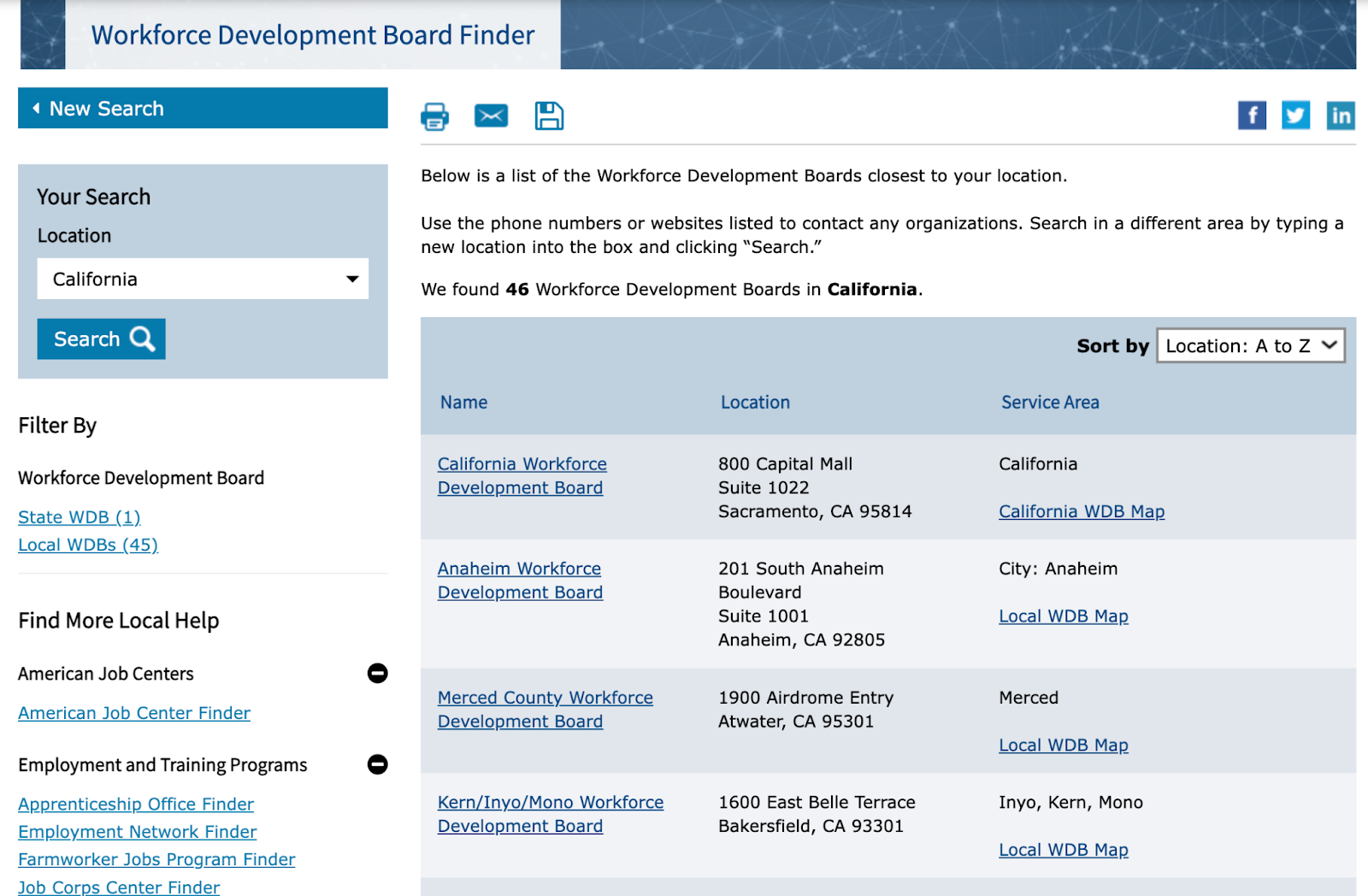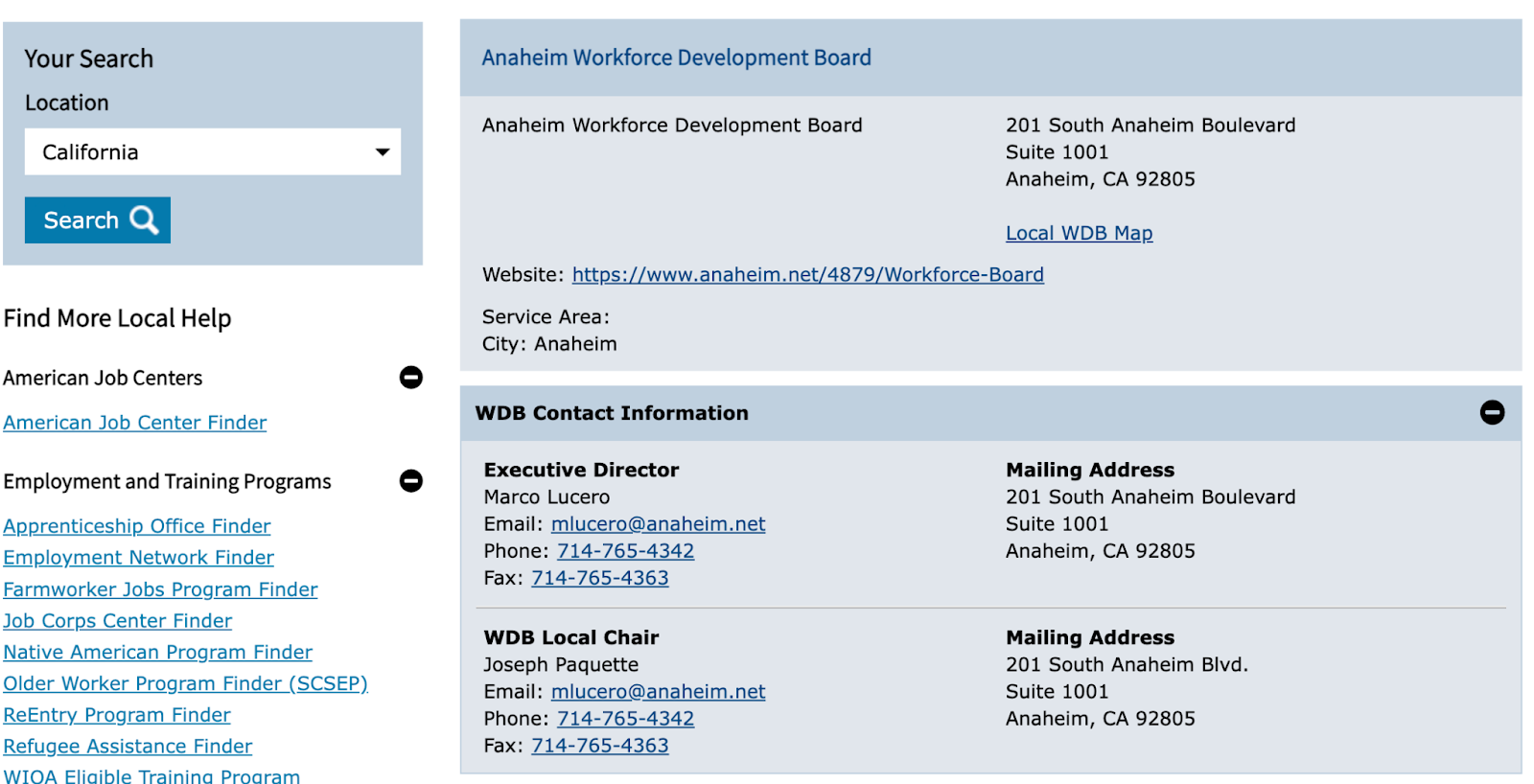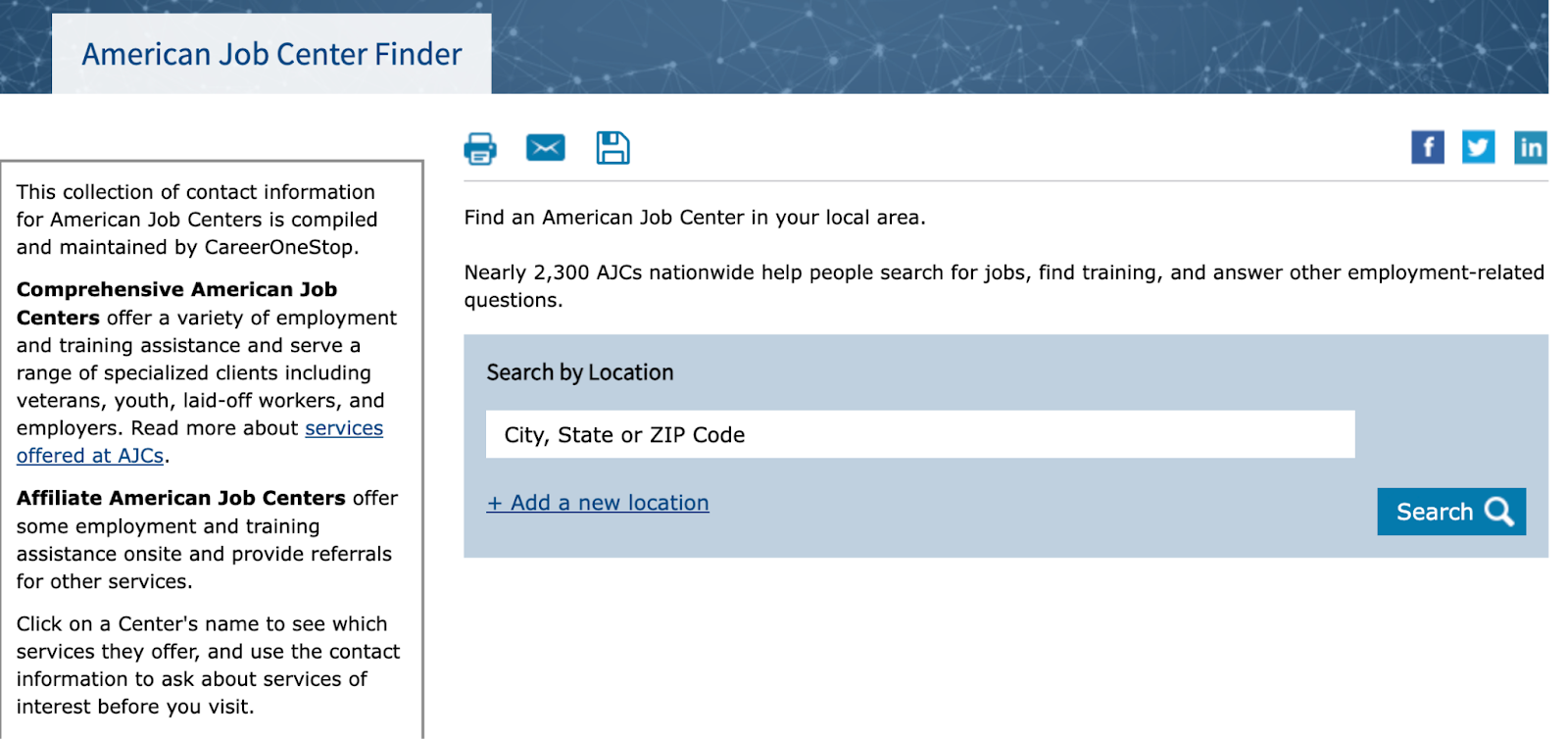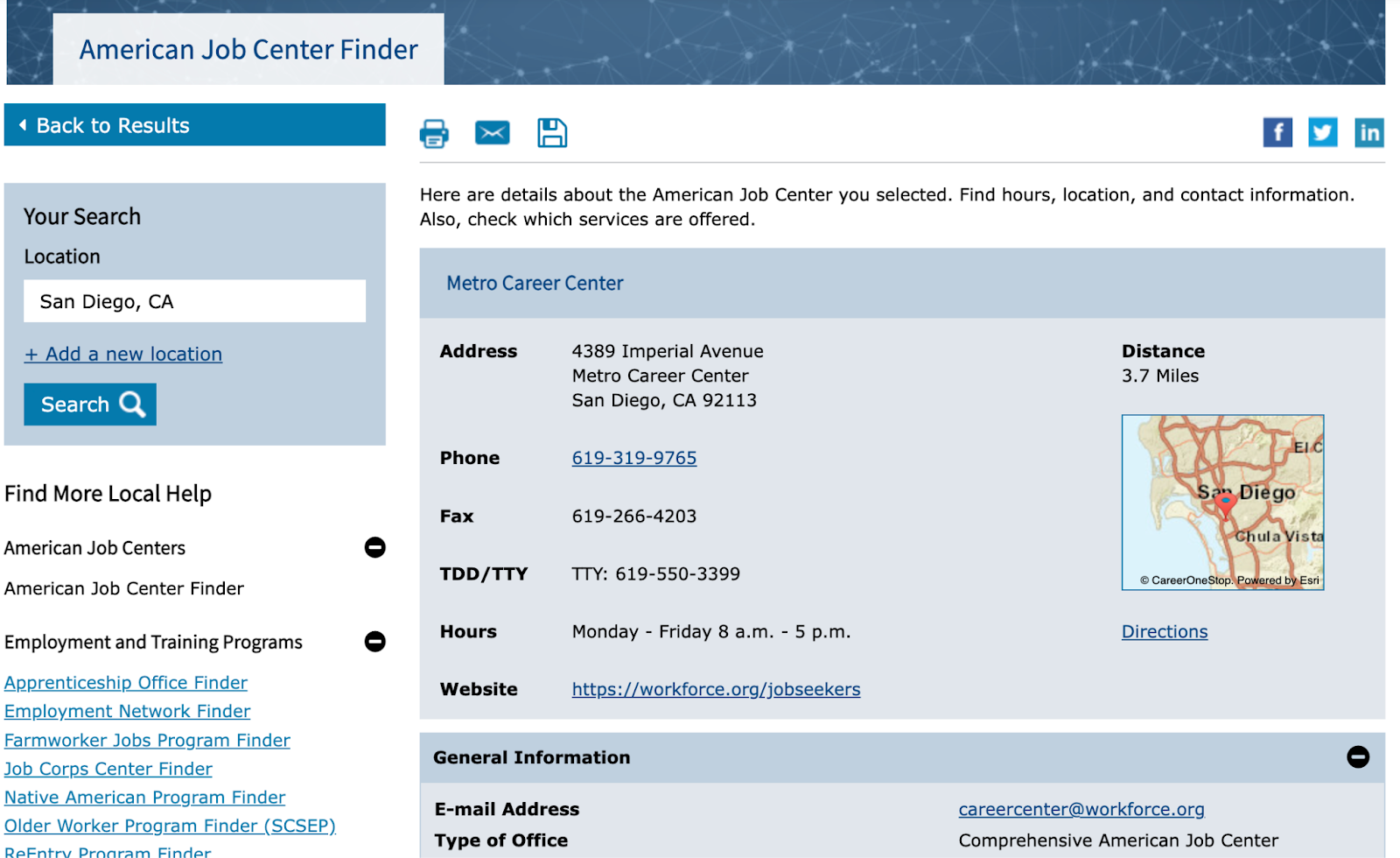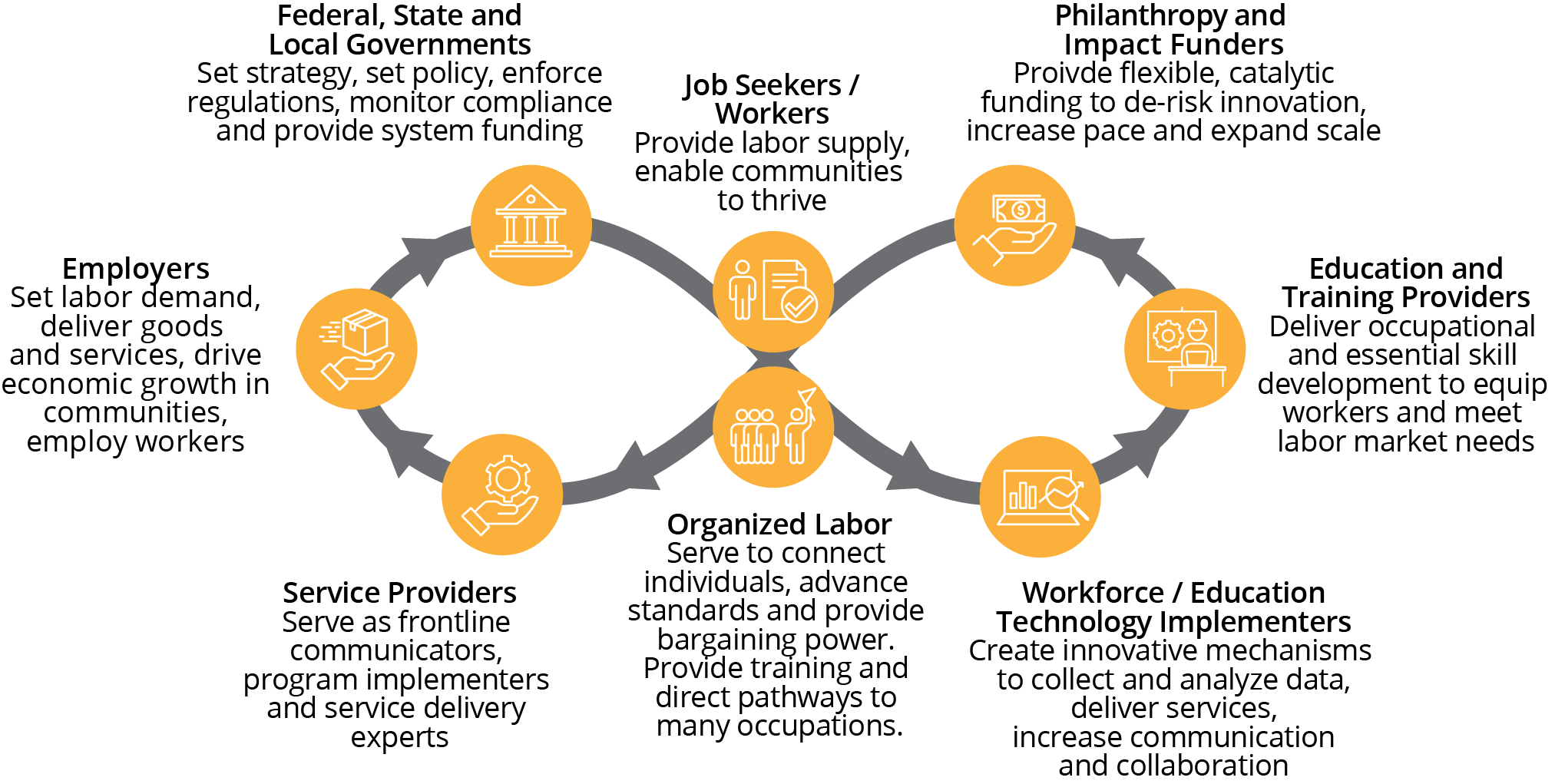Each city belongs to a workforce development area that is led by a local workforce development board. The area may cover a single city or county, may include multiple counties (common in smaller states) or may include a specific set of neighborhoods (common in larger cities). For example, the state of Nevada has two workforce boards, one that covers the northern half of the state and one for the southern half, while the city of Los Angeles has multiple boards, each focused on different neighborhoods.
Each board administers federally allocated Workforce Innovation and Opportunity Act (WIOA) funding, oversees one or more local job centers, and serves as a connector and convenor amongst partners across the larger workforce development system. Many boards also administer sector partnerships with employers, set cross-funding strategies for workforce development programming, and may be the fiscal agent or program administrator for other grants from the Departments of Labor and Education or philanthropy. Some workforce boards also support other social services programs that provide public assistance to low-income populations.
Key Workforce Contacts
The workforce board director is a great place to start for information about existing workforce programs or opportunities, and to collaborate on an upcoming infrastructure grant. Workforce boards manage lists of existing training providers and apprenticeship programs for in-demand careers through something called the Eligible Training Provider List (ETPL) and incumbent worker training through employers.
The American Jobs Center in your area is a wonderful resource to learn about existing programs, supportive services and trends in the workforce locally. They also provide a physical point of access for many partners and workers in the community.
Finding Your Workforce Board
To find your local workforce development board, use the Workforce Development Board Finder. Select your state from the drop-down menu and then check the service areas for your city or county. Clicking on the name of the board will provide additional information such as its board director and website.
Finding Your Local American Job Center
To locate the job center(s) in your area, use the American Job Center Finder and enter your city name or zip code. Clicking on the name of a job center will provide contact details for that location.
The Workforce Ecosystem
Beyond workforce boards and their job centers, the larger workforce system includes an expansive set of partners, each of which tap into varying funding sources, knowledge and experience in order to carry out their portion of the work.
Together, the system is positioned to tackle both supply and demand challenges in the market, providing wrap-around services to individuals in need to reduce or eliminate barriers to their success.
Ways to Work with Your Workforce System
Consider partnering with your board, and its partners, in a number of key ways:
- Understanding the number and type of jobs being created (Labor Market Information) and the credentials or skills that map to those needs
- Jointly developing a workforce strategy or plan for infrastructure and climate jobs; partnering on grant submissions for infrastructure funding that will advance the plan’s implementation
- Funding the expansion of training available through eligible training programs, such as those on the ETPL, in climate and infrastructure fields, or customized training partnerships (CTs) that the board may have in place with specific employers or unions for upskilling their workers
- Co-funding or braiding workforce and infrastructure funding to bridge any gaps such as supportive services in current programming, expand the number of individuals who can be served or expedite the launch of new cohorts
- Leveraging existing partnerships to maximize community reach, facilitate the delivery of supportive services or address translation and language services for English language learners
- Utilizing the virtual and physical job center infrastructure for the hosting of information or recruiting sessions and the provision of job readiness and job search services
- Investing in the development of new training programs, with support of the workforce board, local employers, unions and educators, such as apprenticeship and pre-apprenticeship programs
- Building worker knowledge around their rights, protections, services and reporting avenues
- Implementing policies that will protect and uplift all workers
See more details around ways to partner with workforce agencies in each of the workforce strategies.
Workers/Job Seekers
- Incumbent workers
- Adults (18+)
- Dislocated workers
- Youth and young adults (16–24)
Organized Labor
- Labor unions and collective bargaining entities
Philanthropy and Impact Funders
- Family foundations
- Community foundations
- Pooled funds / funder collaboratives
- Corporate giving offices
- Venture philanthropy
- Community Development Financial Institutions
- Impact investing organizations
Education / Training Providers
- K–12 system
- Adult education
- Community college
- 4-year colleges and universities
- Employer-led training (apprenticeship, pre-apprenticeship, on-the-job, internships)
- Social enterprises
- For-profit and nonprofit training institutions
Workforce / Education Technology Implementers
- Software/cloud companies providing solutions for data collection, communications, evaluation and related services
- Hardware companies providing portable devices for community-based service
Service Providers
- Nonprofit organizations
- Community-based organizations
- Social enterprises
- For-profit service delivery organizations
Employers
- For-profit businesses of all sizes
- Nonprofit organizations
- Government agencies
- Entrepreneurs
- Gig and contract work
Federal, State and Local Governments
- Workforce development boards / agencies
- Economic development agencies
- Health and human services
- Homelessness committees, task forces
- Chambers of commerce
- Small business associations
- Governor or mayor’s office



